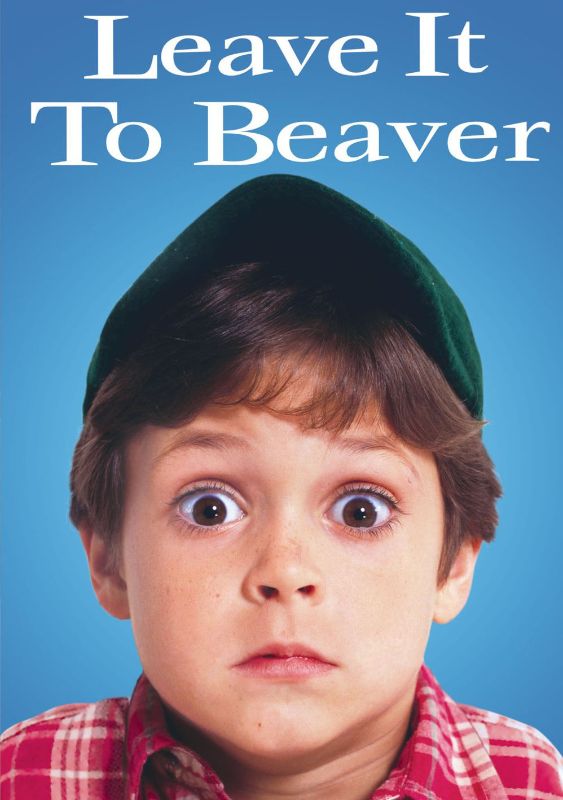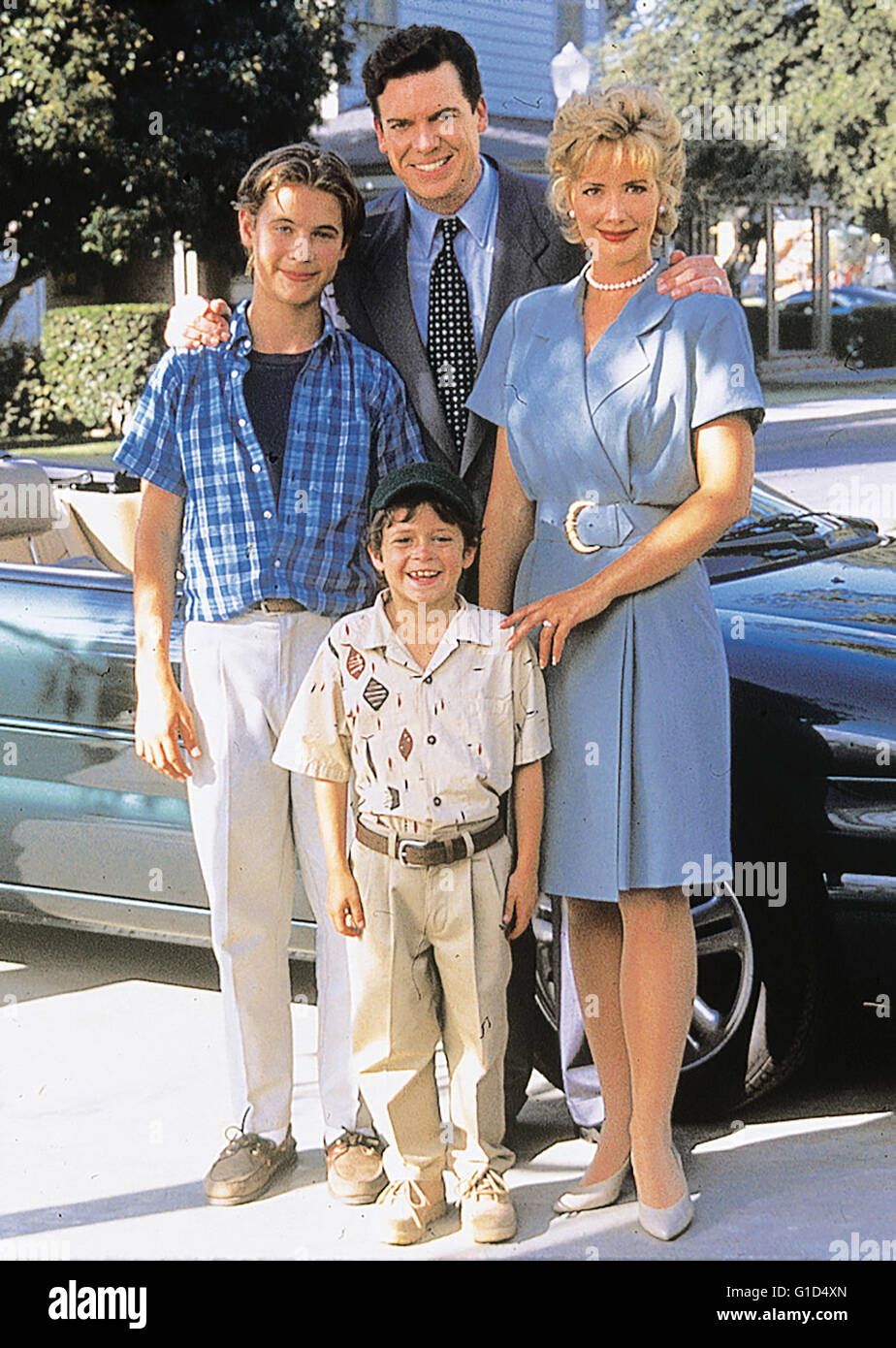Ever pondered how a seemingly simple television show could become a cultural touchstone, its name woven into the very fabric of our language? Leave It to Beaver, more than just a sitcom, has become a shorthand for an idealized, often unrealistic, vision of American family life, a notion that continues to resonate, even as the world around us has dramatically changed.
The genesis of Leave It to Beaver lies in the late 1950s and early 1960s, a period of significant social and cultural transformation in the United States. The show, which premiered in 1957 and continued until 1963, offered viewers a glimpse into the seemingly idyllic world of the Cleaver family. Set in a typical suburban environment, the series chronicled the everyday lives of Ward and June Cleaver and their two sons, Wally and Theodore Beaver Cleaver. It was a time when television was rapidly becoming a central part of American life, and Leave It to Beaver quickly found a devoted audience, captivating viewers with its portrayal of family dynamics, childhood adventures, and the simple values of honesty, responsibility, and respect. The show became a reflection of, and a reinforcement of, the societal norms of the era.
| Topic | Details |
|---|---|
| Show Title | Leave it to Beaver |
| Original Run | 1957-1963 |
| Setting | Suburban America |
| Main Characters | Ward Cleaver, June Cleaver, Wally Cleaver, Theodore Beaver Cleaver |
| Theme | Idealized American Family, Childhood Experiences |
| Cultural Impact | Became a cultural reference point for idealized family life and suburban norms; slang term |
| Key Themes Explored | Family values, childhood challenges, moral development, societal expectations |
| Significance | Emblematic of the 1950s and early 1960s, reflecting the values and aspirations of the time |
| Notable Aspects | Portrayal of gender roles, family dynamics, and social interactions of the era. |
The show’s popularity stemmed, in part, from its ability to tap into the aspirations of a post-war America eager for stability and normalcy. The Cleaver family, with their well-mannered children, loving parents, and comfortable suburban home, represented an ideal that many viewers aspired to. The show provided a sense of comfort and reassurance, especially during a time of significant social change and global uncertainty, as the cold war continued and civil rights movements gained momentum. The consistent moral compass of the show and its gentle approach to conflict resolution made it a safe and appealing escape for audiences.
The term Leave It to Beaver itself has evolved beyond a mere reference to the television program. It has become a slang term, a cultural shorthand, used to describe a variety of situations and concepts. It's frequently invoked to suggest a situation that appears effortlessly resolved, an instance where everything falls neatly into place, reflecting the show's often simplistic and problem-solving approach. It is frequently used to suggest someone doesn't have to worry about a particular situation, because it will be handled or sorted out easily. This usage highlights the contrast between the show's carefully constructed world and the complexities of real life, the challenges that were glossed over for the sake of the narrative.
The series' staying power is undeniable. Its syndicated re-runs, broadcast long before the advent of cable television, ensured that the show remained a constant presence in the American viewing landscape for generations. The show was marketed aggressively, cementing its place in the popular consciousness. The show's legacy wasn’t simply its availability for viewers, but also the very fact of its constant presence, acting as a reminder of this idyllic version of family life.
However, the seemingly innocent facade of Leave It to Beaver hides a more complex reality. The show’s portrayal of the perfect nuclear family has been subject to significant scrutiny. The Cleaver family, despite their charm, represents an idealized and often unrealistic portrayal of family life. The show often reinforces traditional gender roles, with June Cleaver embodying the dutiful homemaker and Ward Cleaver providing the wise counsel. The show's portrayal also glosses over the complexities of social issues and the challenges of diversity, presenting a homogenous view of American society that is increasingly seen as out of touch.
Furthermore, Leave It to Beaver often presented simplistic solutions to complex problems. While the show's focus on moral lessons and good intentions was certainly admirable, it often failed to grapple with the deeper societal issues that plagued the era. This simplistic approach, while providing comfort to viewers, has also led to criticism that the show lacked depth and failed to reflect the true complexities of the human experience. While the show aimed to present an idealized version of family life, it simultaneously reinforced certain norms, and this, in turn, shaped societal expectations.
The show's enduring appeal can also be attributed to its strong focus on storytelling. Each episode of Leave It to Beaver revolved around a simple moral dilemma or a relatable childhood experience. The show's writers were adept at crafting narratives that resonated with viewers, making them feel connected to the Cleaver family and their everyday struggles. This relatable storytelling, coupled with the show's optimistic outlook, helped to create a loyal following that spanned generations. The show's consistent focus on values like honesty, integrity, and respect, helped to create a positive and enduring appeal.
The show's influence is also evident in its contribution to the development of the sitcom genre. Leave It to Beaver introduced many of the archetypes that became common in sitcoms that followed, including the wise father figure, the loving mother, and the mischievous yet lovable children. The show set the standard for family-oriented comedy, paving the way for later shows like The Brady Bunch, Family Ties, and Full House. It helped to define what family comedy was, and many other programs followed in its wake.
The careful construction of the show is a testament to its enduring appeal. Even elements that seem random can be interpreted to have underlying purpose. For example, the seemingly innocuous mention of cackerel – a small, Mediterranean fish – reveals the meticulous detail that went into the show’s creation. Each element was deliberately placed, underscoring the show's dedication to creating a world that, while idealized, still felt plausible. This attention to detail has contributed to the show's lasting impact.
Today, Leave It to Beaver continues to be referenced in popular culture. The show's enduring legacy serves as a reminder of the values of a bygone era and the power of television to shape cultural perceptions. It continues to spark debates about family values, societal norms, and the complexities of the human experience. Its influence is still felt across the media, from film to television.
In considering the meaning of the phrase, Leave It to Beaver, one must also acknowledge the evolving societal context in which it is used. What once represented a comforting ideal has become, for some, a symbol of nostalgia. The term highlights the contrast between the idealized vision of the Cleavers and the real world, with its complexities and challenges. It prompts reflection on how our understanding of family, values, and societal expectations have shifted over time.
In conclusion, Leave It to Beaver is more than just a television show; it's a cultural phenomenon that has left an indelible mark on American society. The show provided a snapshot of the American ideal, and it has become part of our shared cultural memory. Whether it is regarded as a comforting nostalgic reflection of the past or an unrealistic and idealized representation of family life, Leave It to Beaver has undeniably shaped the way we think about families, values, and the very notion of the American dream.



